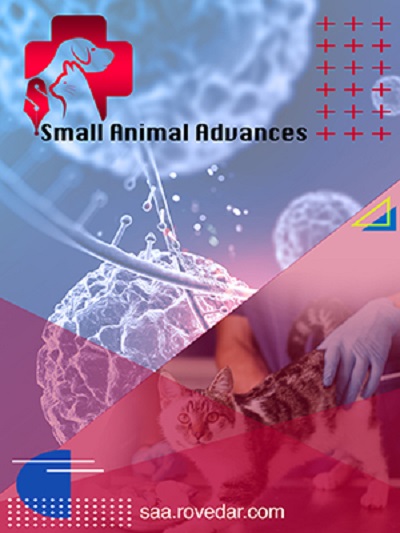Selamectin Spot-on: A Cure for Scabies in Rabbits
Main Article Content
Abstract
Introduction: Mange in rabbits is a highly contagious zoonotic disease. The disease is caused mainly by Sarcoptes scabiei, Psoroptes cuniculi, Cheyletiella parasitovorax, and Notoedres cati. The most common forms of this disease in rabbits are body and ear mange. Mites infest animals through direct contact with infected animals or contaminated.
Case report: An 8-month-old non-descript female rabbit weighing about 700 g was presented to the Teaching Veterinary clinical complex, Mettupalayam, Puducherry, India, with a history of scratching, pruritus and dried crusty lesions on the margins of the ears, snout, around the eyes and legs and patchy hair loss for the past 15 days. Rectal temperature was 38.4°C, heart rate was 210 bpm, respiratory rate was 40 breaths/minute, and the color of the conjunctival mucous membrane was pink. Other signs included inappetence with normal voiding habits and a thin body condition. The collected skin scraping from the affected areas was examined under the microscope with a 10x objective lens, confirming the presence of live motile Sarcoptes spp. Mite species could be determined through the morphological characteristics (adult mites are nearly circular with short legs, and the third and fourth pairs do not project beyond the margin of the body with terminal anus) under the microscopic examination of the skin scrapings. Therefore, 6% selamectin was applied topically on a single spot at the base of the neck. Supportive therapy with multivitamin (vitamin A, D3, E, B12) drops was given orally at 1 ml per day.
Conclusion: The rabbit responded well to the treatments within 2 weeks.
Article Details

This work is licensed under a Creative Commons Attribution 4.0 International License.
References
Abd El-Ghany WA. Mange in rabbits: An ectoparasitic disease with a zoonotic potential. Vet Med Int. 2022; 2022: 5506272. DOI: https://doi.org/10.1155/2022/5506272
Bhatia BB, Pathak KML, and Juyal PD. Textbook of veterinary parasitology. 4th ed. New Delhi, India: Kalyani publishers; 2007. p. 382-383. Available at: https://www.journeywithasr.com/2021/01/textbook-of-veterinary-parasitology-by-bb-bhatia.html
Lebas F. Vitamins in rabbit nutrition Literature review and recommendations. World Rabbit Sci. 2000; 8(4): 185-192. DOI: https://doi.org/10.4995/wrs.2000.438
Kumar B, Kumar N, and Sinha RK. Management of mange infection in New Zealand white rabbit. Indian J Vet Med, 2013; 33(2): 146-147.
Singh Sandhu H. Essentials of veterinary pharmacology and therapeutics. 2nd ed. Ludhiana, India: Kalyani publishers; 2013. p. 1053,1055,1118.
Bhardwaj RK, Ahmad Mir I, Ahmad O, Kumar A, Wahid A, and Bhardwaj D. An outbreak of mange in rabbits. Indian Vet J. 2012; 89(12): 78.
Morris DO, and Dunstan RW. A histomorphological study of sarcoptic acariasis in the dog: 19 cases. J Am Anim Hosp Assoc; 1996; 32(2): 119-124. DOI: https://doi.org/10.5326/15473317-32-2-119

